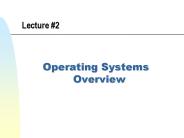Just-In-Time Systems - PowerPoint PPT Presentation
1 / 23
Title:
Just-In-Time Systems
Description:
Chapter 16 Just-In-Time Systems JIT/Lean Production Repetitive production system in which processing and movement of materials and goods occur just as they are needed ... – PowerPoint PPT presentation
Number of Views:68
Avg rating:3.0/5.0
Title: Just-In-Time Systems
1
Chapter 16
- Just-In-Time Systems
2
JIT/Lean Production
- Repetitive production system in which processing
and movement of materials and goods occur just as
they are needed, usually in small batches - JIT is characteristic of lean production systems
- A JIT system operates with very little fat
3
JIT Goals
- Eliminate disruptions to the system
- Make the system flexible
- Reduce setup and lead times
- Minimize inventory in the system
- Eliminate waste in the system
4
Sources of Waste
- Waste from overproduction
- Waste of waiting time
- Transportation waste
- Inventory waste
- Processing waste
- Waste of motion
- Waste from product defects
5
JIT Building Blocks
- Product design
- Process design
- Personnel/organizationalelements
- Manufacturing planning and control
6
Product Design
- Incorporate standard parts when possible
- Modular design
- Highly capable production systems
7
Process Design
- Small lot sizes
- Setup time reduction
- Manufacturing cells
- Limited work in process
- Quality improvement
- Production flexibility
- Little inventory storage
8
Benefits of Small Lot Sizes
9
Production Flexibility
- Reduce downtime for an operation by reducing
changeover time - Use preventive maintenance to reduce the chance
of random breakdowns - Cross-train workers to help clear bottlenecks
- Reserve capacity for important customers
10
Personnel/Organizational Elements
- Workers regarded as assets
- Cross-trained workers
- Continuous improvement
- Cost accounting
- Leadership/project management
11
Manufacturing Planning and Control
- Level loading
- Pull systems
- Visual systems
- Close vendor relationships
- Reduced transaction processing
- Preventive maintenance
12
Pull/Push Systems
- Pull system System for moving work (material)
where a workstation pulls output from the
preceding station only as it is needed - Push system System for moving work where output
is pushed to the next station as it is completed
(e.g. MRP)
13
Kanban Production Control System
- A visible signal is used to notify the supplier
(or supplying department) of the need for more
material - This results in a pull system
- Supply batches are usually very small
- requires tight production/delivery schedules and
frequent setups - Any inventory shortage, quality problem or
process failure has immediate impact
14
Ideal Number of Kanban Cards
15
Traditional Supplier Network
Figure 16-3a
Buyer
16
Tiered Supplier Network
Buyer
Figure 16-3b
17
Summary JIT Goals and Building Blocks
Figure 16-4
18
Benefits of JIT Systems (1 of 2)
- Reduced levels of inventories
- Reduced space requirements
- Increased product quality
- Reduced lead times
- Greater flexibility in product mix
19
Benefits of JIT Systems (2 of 2)
- Smoother production flow
- Increased productivity levels
- Worker participation in problem solving
- Pressure for good vendor relationships
- Reduced need for indirect labor
20
Converting to a JIT System
- Get top management commitment
- Decide which parts need most effort
- Obtain support of workers
- Start by trying to reduce setup times
- Gradually convert operations
- Convert suppliers to JIT
- Prepare for obstacles
21
Obstacles to Conversion
- Management may not be committed
- Workers/management may not be cooperative
- Suppliers may resist
22
JIT in Service
- The basic goal of the demand flow technology in
the service organization is to provide optimum
response to the customer with the highest
quality service and lowest possible cost - Eliminate disruptions
- Make system flexible
- Reduce setup and lead times
- Eliminate waste
- Minimize WIP
- Simplify the process
23
JIT II
- JIT II the practice of allowing vendors to
manage some aspects of buying their products or
services for the buyer































